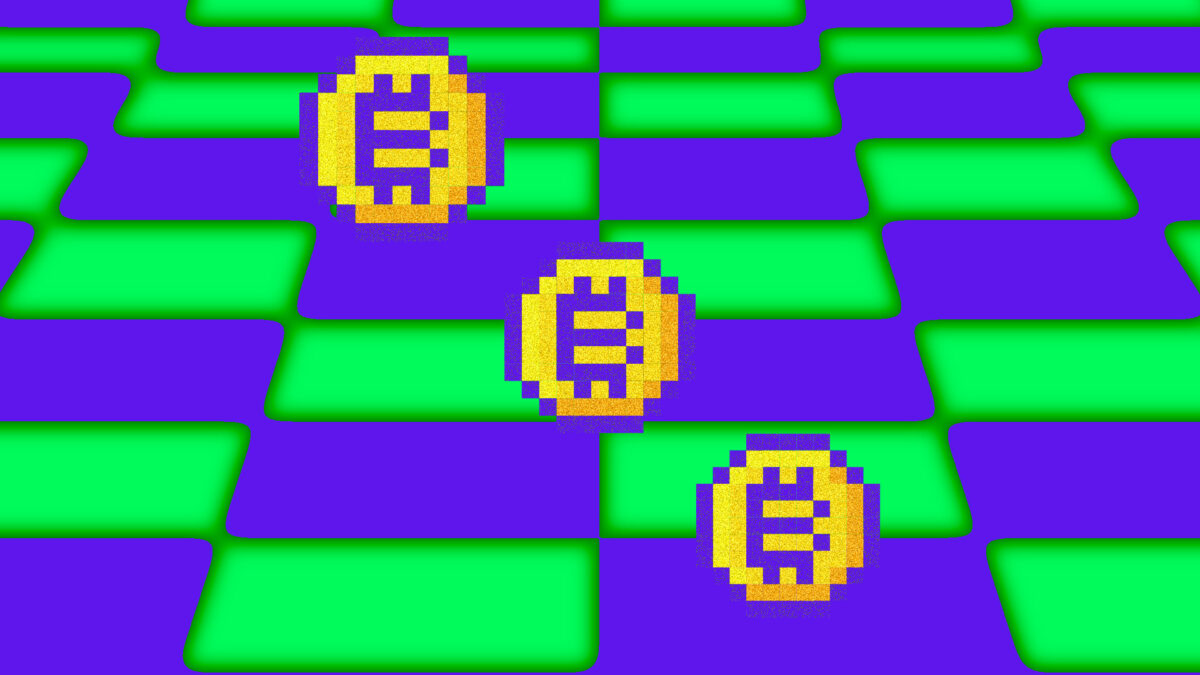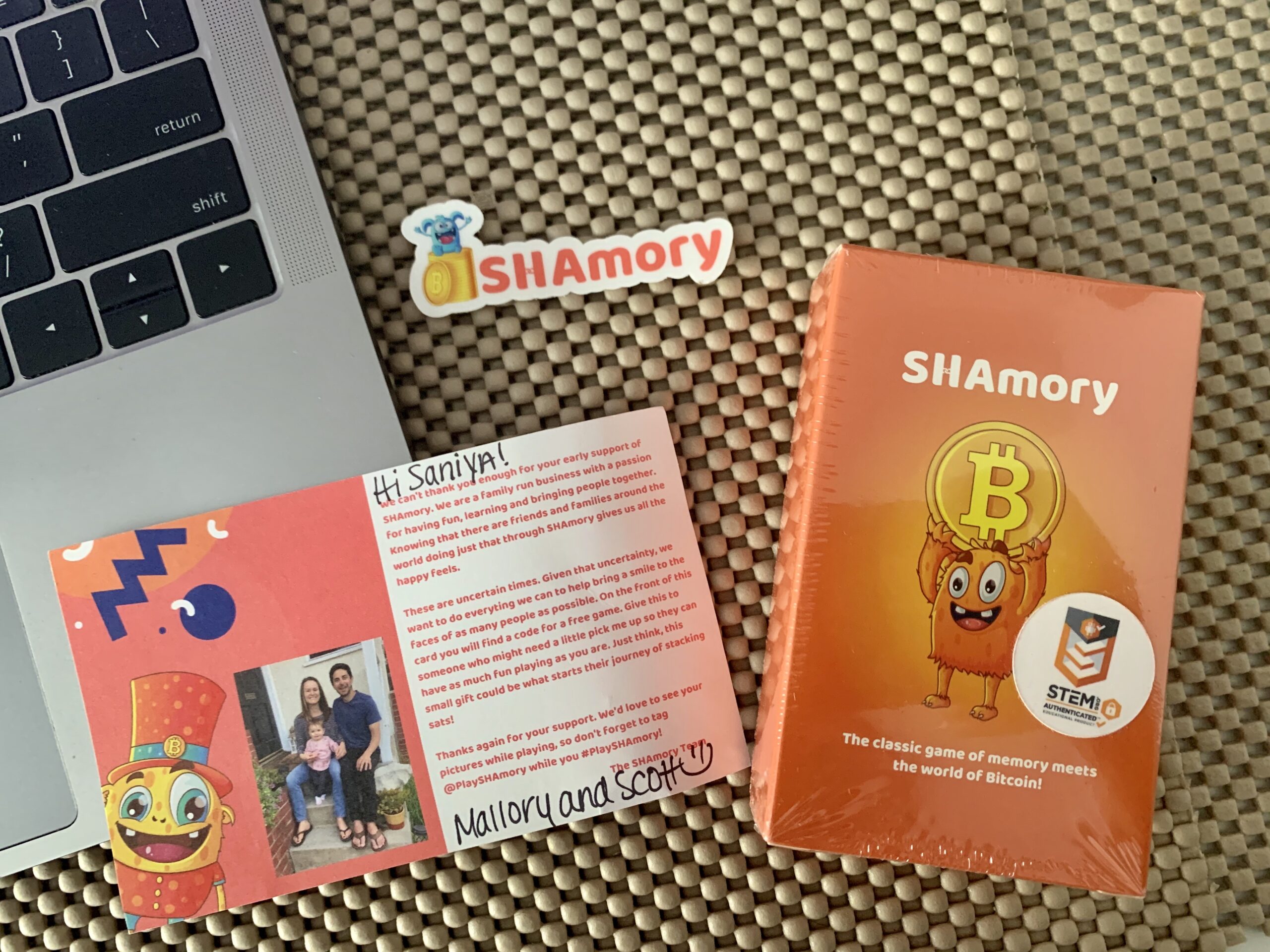This new card game aims to teach kids about Bitcoin mining

Quick Take
- SHAmory is a card game that teaches players the basics of bitcoin mining
- The goal of the game is to create a complete chain of ten blocks by matching Nonce and Target cards while mining “rewards”
- According to game creator Scott Sibley, SHAmory is intended to raise awareness about blockchain tech

I entered the crypto space a few months ago with a very rudimentary understanding of how cryptocurrencies, blockchain and digital markets work. So, when I heard about a new bitcoin game designed to educate people about how the technology works, I was immediately intrigued.
SHAmory — an amalgamation of “SHA” from SHA-256, a cryptographic algorithm used in bitcoin mining — and “mory” from the word memory — is a Bitcoin card game that teaches players the basics of mining.
According to game creator Scott Sibley, SHAmory is intended to increase awareness around blockchain tech, serving as an educational tool for those looking to learn the ins and outs. The game is designed for younger players, although Sibley said that anyone can participate.
“You don’t have to know anything about Bitcoin to play, it’s just a simple game that anybody can pick up and go on,” Sibley told The Block.
Sibley came up with the card game about a year ago after he realized he wanted to create something that would make it easier for people to understand the technology's fundamentals. Sibley works for an edtech firm in San Diego and comes from a family of teachers — both qualities that pushed him to create the game. Sibley started shipping orders in early July. When we spoke, he had sold over 100 copies of the game.
Being a bit of a blockchain novice, I was pretty keen to play the game, so Sibley sent me a deck in the mail. The game came in a small box covered with cute blockchain-themed monsters. The package consisted of a deck of multicolored cards, a special die and a Shamory sticker.

After watching the game tutorial — several times, I will admit — I had a basic understanding of the rules.
There are five different types of cards:
- Difficulty Adjustment cards used to adjust the game’s difficulty level
- Nonce cards with different Bitcoin monsters on them
- "Attack" and "Reward" cards
- Target cards with matching Bitcoin monsters on them
- "Block' cards numbered one to ten.
The goal of the game is to create a complete chain of ten blocks by matching Nonce and Target cards while winning enough Reward cards in the process.
It’s definitely less complicated than it sounds. Each player takes turns rolling a four-sided die. Three of its sides indicate a “Mine” action, when the player flips over one Nonce card, hoping to match the monster on the current Target card. One side indicates an “Attack” action. As players match Nonce and Target cards, they add a block to the chain.
However, if a player rolls an Attack, the Attack card is played alongside the lowest block on the blockchain. If the Attack cards chain gets longer than the blockchain, a 51% attack has occurred and the game starts over.
I played the game a couple of times by myself (because quarantine) until I managed to convince a friend to play with me. For context, my friend knows nothing about the crypto space and played the game with very minimal understanding about mining. We played a couple of times but could never mine to the block height of ten. At one point, my friend frustratedly remarked: “Maybe we could suck a little less.”
We’re both in our early twenties, so we’re not exactly Sibley’s core target audience. I decided to talk to a few parents who had played the game. For example, sales consultant Ryan Bergh came across the game on Twitter.
“I try to talk to my kids about Bitcoin and how it will play a big part of their lives in the future. A game they could play and learn something which would reinforce what we talk about at dinner seemed like a great idea,” he said.
Bergh immediately ordered two copies for his and his brother’s families. He told The Block that he's played the game at least 20 times with his wife and five-year-old daughter.
“Truth be told, I have lost most of these games, but I attribute that to the stellar memory of my counterparts,” he said.
Bergh said the first game and set-up were initially shaky, but that SHAmory’s video tutorial made it easier to understand. He made a list of things he could submit for feedback, but after the first game, he said he realized most of the things on his list had already been resolved. Bergh said his daughter loves to play the game and often wants to play after school.
“When you add in the more basic ideas of mining blocks and getting rewards, it helps build a bridge that hadn't quite been built yet between myself and my daughters,” Bergh said. “Ultimately this game is great at reinforcing Bitcoin as a real thing and not just some idea that Dad talks about.”
Cryptominer and influencer Mykel P. also played SHAmory with his kids and said that it was easy for them to grasp. His only suggestion was to see this game implemented for other Proof-of-Work coins to teach players how the different algorithms work.
Sibley said he definitely wants to expand SHAmory into other games around the characters and Bitcoins that came in different formats, like short books and cartoons. Sibley also said he wants to build an authenticated STEM product that could be eventually used in school programs.
Sibley celebrated his daughter’s first birthday just a few weeks ago and said she was a huge inspiration behind the creation of the game.
“My hope is that it helps her see that there is this world out there that’s being created by Bitcoin that is worthwhile to pay attention to,” he said. “Even beyond that, whether I end up selling 500 of these games or 500,000, I want to show her that if you have an idea that is crazy as it sounds, it can happen, whether it is related to Bitcoin or not.”
© 2023 The Block. All Rights Reserved. This article is provided for informational purposes only. It is not offered or intended to be used as legal, tax, investment, financial, or other advice.



